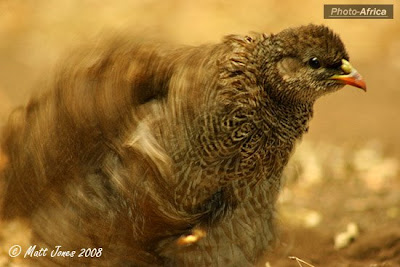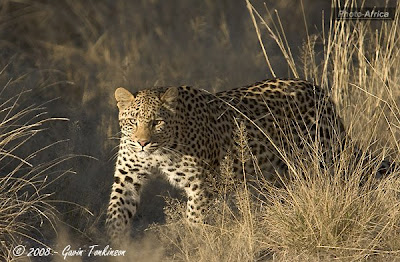معاون مدير ملي حفاظت از تالابهاي ايران گفت: در پي بحران درياچه اورميه نمك در بدن فلامينگوهاي درياچه اورميه كريستاليزه شده است.
به گزارش خبرگزاري فارس از اورميه، محسن سليماني روزبهاني ظهر امروز (سهشنبه) در سمينار بررسي مسائل حوزه آبريز درياچه اورميه كه در سالن جلسات سازمان جهاد كشاورزي آزربايجان غربي تشكيل شد، اظهار داشت: به واسطه غلظت بالاي نمك در درياچه اروميه زنگ خطر جدي براي فلامينگوها و حيات وحش اين درياچه ايجاد شده كه پرواز را از آنها ميگيرد.
وي تصريح كرد: در سطح كشور در بحث تالابها رقابت بين كاربرهاي مختلف از نظر نياز آبي وجود دارد چرا كه در برنامهريزي بلندمدت توسعهاي نياز تالابها را به صورت جدي مورد بررسي قرار نميدهيم.
اين مقام مسئول به تغييرات كاربري اراضي در حوزه تلابها اشاره كرد و افزود: تخليه فاضلاب شهري و روستايي و خشكسالي، تالابها را تحت تاثير قرار ميدهد.
سليماني روزبهاني به پيامدهاي ايجاد شده ناشي از بحران موجود در درياچه اورميه اشاره كرد و گفت: درياچه آرال 15 برابر درياچه اورميه وسعت داشت كه نقش طرحهاي توسعه در ايجاد بحران اين درياچه 94 درصد بود.
بحران درياچه اورميه سبب تغيير زمانبندي فصلها ميشود
وي اعلام كرد: افزايش نمك و مواد شيميايي در هوا بر اثر خشك شدن درياچه اورميه سبب ايجاد تغيير زمانبندي فصلها، افزايش ابتلا به سرطان، افزايش روزهاي بدون باران و تغيير در زمان كشت و برداشت ميشود.
اين مقام مسئول با بيان اينكه تالاب پريشان در استان فارس از مهمترين اكوسيستمهاي آب شيريني دنيا است، گفت: در حال حاضر عمده طرحهاي حفاظت از تالابهاي ايران در زمينه احياي تالابهاي درياچه اورميه و تالاب پريشان است.
سليماني روزبهاني اظهار داشت: درياچه اورميه مابين سه استان آزربايجان غربي، آزربايجان شرقي و كردستان قرار دارد و بر اثر طرحهاي توسعه انجام گرفته در اين سه استان، در حال حاضر وضعيت درياچه اورميه بحراني است.
وي عمده عوامل موثر در بحران درياچه اورميه را طرحهاي توسعهاي و سدهاي احداث شده و در حال احداث عنوان كرد و افزود: عدم برنامهريزي مناسب سبب نوسانات آبي درياچه اورميه شده است به طوري كه متوسط تراز آبي درياچه اورميه 127.37 مترمكعب است و اين در حالي است كه در حال حاضر حتي در متوسطترين وضعيت نيز قرار نداريم و آب درياچه اورميه سه متر پايينتر از تراز اكولوژيكي آن است.
اين مقام مسئول تصريح كرد: بايد منتظر كاركرد اكولوژيكي مناسب باشيم و اين در حالي است كه حداقل تراز الكولوژيكي درياچه اورميه بايد 127.1 متر مكعب باشد كه در حال حاضر اين ميزان به 127.5 مترمكعب رسيده است.
طرح حفاظت از تالابهاي ايران تدوين شده است
معاون مدير ملي طرح حفاظت از تالابهاي ايران با اشاره به تدوين طرح حفاظت از تالابهاي ايران، گفت: در راستاي برنامههاي تدوين شده در اين زمينه مديريت طرح را پيش ميبريم و در اين راستا حفظ اكوسيستم با ارزش طبيعي، هدف اصلي ما است.
سليماني روزبهاني با اشاره به اقدامات انجام گرفته در حفاظت از محيط زيست در سالهاي گذشته، اظهار داشت: در نخستين نسل از اكوسيستمهاي حفاظت شده استفاده از سيم خاردار مورد توجه قرار گرفته بود كه اين موضوع به دليل ناكارآمد بودن كارساز نبود چرا كه مردم به دنبال معيشت خود براي تخريب محيط زيست و شكار دست ميزدند.
وي تصريح كرد: اين موضوع تعارض بيپايان را در بين مردم، دولت و منابع طبيعي ايجاد كرد و بر اين اساس و به خاطر عدم موفقيت، بحث مديريت زيست بومي مطرح شد كه در آن حفاظت و مديريت همزمان با بهرهبرداري پايدار مدنظر قرار ميگيرد.
اين مقام مسئول با بيان اينكه ايران عضو كنوانسيون تنوع محيط زيست است، افزود: با توجه به اينكه ايران عضو كنوانسيون تنوع محيط زيست است، بايد مديريت اكوسيستمي نيز در درياچه اورميه و تالابهاي آن اجرايي شود.
سليماني روزبهاني با بيان اينكه در اين راستا 23 تالاب در سايت رامسر ثبت شده است، گفت: در ماده 67 قانون برنامه توسعه اجرايي كردن مديريت زيست محيطي مطرح است كه همه اين تعهدات در مجامع بينالمللي مطرح شده و در حال اجرايي كردن پروژهها هستيم.
وي با بيان اينكه ايران داراي 100 ايستگاه تالابي و 80 تالاب بينالمللي است، اظهار داشت: بحران در تالابها اثرات فرامنطقهاي را سبب ميشود و طرح حفاظت از تالابهاي ايران بين سه مرجع حفاظت محيط زيست، برنامه توسعه ملل متحد و صندوق بينالمللي محيط زيست انجام ميشود.
طرح ملي حفاظت از تالابهاي ايران داراي سه سايت مطالعاتي است كه درياچه اورميه يكي از اين سايتها محسوب ميشود و از اين سه سايت، درياچه اورميه با توجه به كاهش 94 درصدي ورودي آب به خاطر طرحهاي توسعه در وضعيت بحراني قرار دارد
منبع
http://tinyurl.com/2vcjvrt


























